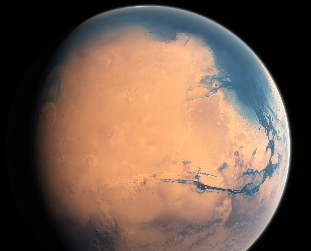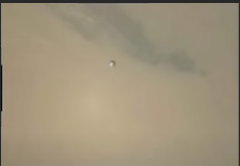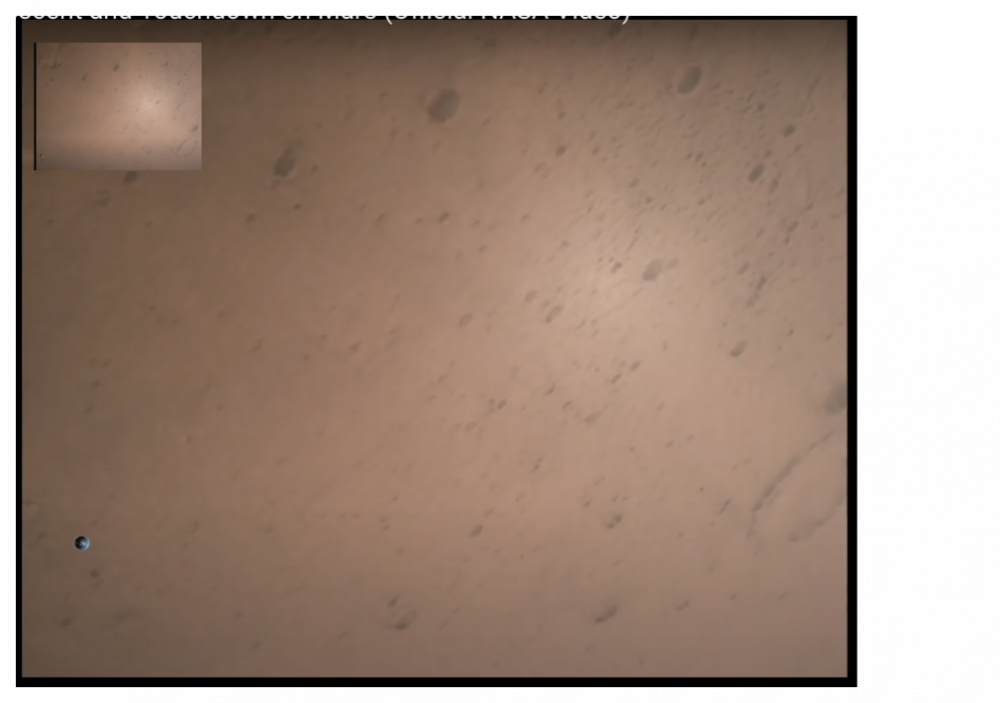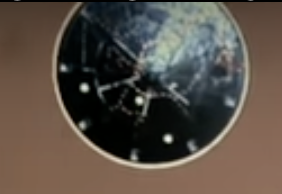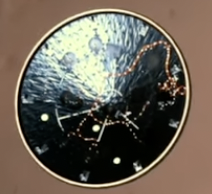-
Posts
2581 -
Joined
-
Days Won
21
Content Type
Profiles
Forums
Events
Everything posted by Ghideon
-

Artificial Intelligence with n-gram(Python 2.7 (64 bits) Scripts)
Ghideon replied to fredreload's topic in Computer Science
The information provided is too limited, I will not try to make a prediction. In my experience performance is a result of many parameters; using another implementation language may or may not result in a required performance boost. -

Synthetics vs natural fibres - odour
Ghideon replied to StringJunky's topic in Biochemistry and Molecular Biology
After workout my cotton socks smells less uncomfortable than my synthetic t-shirt. My synthetic training cap smells really bad. So elevation is one factor to consider? Jokes aside, the following paper "Microbial Odor Profile of Polyester and Cotton Clothes after a Fitness Session" may be of interest*. https://www.ncbi.nlm.nih.gov/pmc/articles/PMC4249026/. It suggests that differences in the properties of fibers promotes different microbes and that differences in absorption may affect the smell. *) I have not checked the quality of the paper, just quickly scanned it to check that it applies to the questions. -
Thanks! Now, let's say we have both the grades for a student, any idea how we could find out if both grades are 8? You could answer something in plain English like "if grade is this then do this..." A loop in this case means some way the algoritm uses to go through the array(s), step by step. A loop may be useful to check grades and do counting. Below is an example of a loop. It means: "go through the grades, one by one, and do something." In this case it prints the grades. grades = [5, 8, 5, 3, 8, 5 ] for x in grades: print(x) The above can be copy-pasted into an online tool such as w3schools* if you want to test. *) in chis specific case you may start here: https://www.w3schools.com/python/trypython.asp?filename=demo_for
-
May we assume 8 is the highest grade? I'll assume that you have two arrays containing 6 integers each: 5, 8, 5, 3, 8, 5 and 5, 8, 7, 4, 8, 3 As a stating point, do you know how to loop through arrays and use the index to access values?
-
Let's try to sum up what you have presented so far: -Claim that a bright area in a video is sun reflection. -Claim that the reflection is "too small" according to some unknown measure. -Support for your claim is an artist impression of mars as, it was believed to have looked like billions of years ago. The effect, light reflected from mars soil, that you discuss is invisible in the artists work. Anyone able to spot a few logical issues with your line of reasoning? Maybe because possible explanations, such as opposition surge, is well known in the community and not a very important aspect of the landing? https://en.wikipedia.org/wiki/Opposition_surge Here is an article specifically targeting the effect on mars: https://www.jpl.nasa.gov/images/opposition-surge-sunlight-glinting-off-mars The opposition surge effect may be the reason why a bright spot appears in both missions' landing videos posted in this thread; Curiosity and Perseverance. The sun seems to be at a very similar angle relative the camera in both cases. As beecee have said from the beginning:
-
I asked: What is the correct size of a reflection under the conditions of the Perseverance landing? Your response: You pick a few frames that show reflection of sun where the surface has water. How does an artist's impression of water reflection support your argument? Also note that in your linked video the dry surface reflection looks like below*. Conclusion: no support for your claim regarding sun reflections on mars surface. Note that the overall brightness variations in your reference picture is similar to the variation in the frames from the video. So the explanation may be that the mars soil is looking slightly brighter or at the spot in the video from the Perseverance descent. Or any combination of this or other possibilities that we have not yet ruled out. Also note that the few frames used on the right seems post processed / compressed witch seems to enhance circular bands that may not be part of the original footage. I recommend a comparison with the original high resolution video rather than a gif. Edit: Other readers may be interested in this with lots of engineering related information about the cameras used on the mission: https://link.springer.com/article/10.1007/s11214-020-00765-9 *) source; link to timestamp where the frame is from: https://youtu.be/sBdioF65wNQ?t=3.
-
The Curiosity Mars Descent Imager (MARDI) captured the rover's descent to the surface of the Red Planet. The instrument shot 4 fps video from heatshield separation to the ground*. Note the faint bright spot. The spherical looking object in the picture below is the heat shield. Repeating it does not rule out other possibilities. What is the correct size of a reflection under the conditions of the Perseverance landing? Side note: It is within reach for radio amateurs to pick up signals from spacecrafts on mission to Mars**. *) Source: NASA Jet Propulsion Laboratory at YouTube https://youtu.be/UcGMDXy-Y1I?t=16 **)https://spaceweatherarchive.com/2021/02/16/ham-radio-signals-from-mars/
-

Game development idea character movement/automation help
Ghideon replied to fredreload's topic in Computer Science
Sorry but I think you need to think through what you want to create and how to present it. It is tricky to sort out what kind of computer science aspects you wish to discuss. The contradictions between you posts does not help. If you want to incorporate FPS*in the gameplay I think it would be more efficient to start from something else than a comparison with Command and Conquer. AFAIK the Command and Conquer franchise does not incorporate FPS gameplay (yet). That may depend on which release in the Command and Conquer franchise you mean. Ever tried the "guard mode"? Side note: I played Command and Conquer a lot; I got Red Alert for Christmas in the 90's. *) First person shooter -
Or it is an artifact in the low res animation. Or post processing of video. Or it is an illusion. Which picture below appears to have the brightest spot? The small inlay or the large picture? Have you accounted for possible swinging movements due to the open parachute? Is the shadow from the parachute or the backshell protecting the rover?
-
@AlexandrKushnirtshuk you may look a few seconds further into the video you linked to. The heat shield is probably just wobbling after being dropped? That makes the heat shield look oval from the camera's point of view and reflections are moving. ( https://youtu.be/4czjS9h4Fpg?t=36) Why do you say "Mars" instead of Mars? Your point? I agree.
-

Artificial Intelligence with n-gram(Python 2.7 (64 bits) Scripts)
Ghideon replied to fredreload's topic in Computer Science
Ok. Suggestion 1: Add comments and documentation to your scripts. Note that Python 2.7 has reached end of life*, migrate to 3.x. *) https://www.python.org/doc/sunset-python-2/ -

Where do algorithms go in the java program heiarchy
Ghideon replied to ALine's topic in Computer Science
Unfortunately those books have run out of fashion; the Java language has evolved a lot since I started. It's hard to give a short answer, it is very dependent on the problem the Java program will solve. In an educational context, for instance if I was involved in a course at a university*, I would likely organize the classes to mirror some "reality" to make the discussion less abstract. Example: a board game would probably have classes that represent players, the board, game state and similar. It might help to separate data structure and algorithm from the implementation. Data structure could be for instance an array of sorted objects. An algorithm for finding a specific object could be "binary search", since the array is sorted. A description how to perform a binary search and any discussion about the algorithm's behavior does not require a specific programming language, we could print an array on paper and perform the algoritm's steps manually. Now let's say we want to implement this in Java; the class will be namned SortedArray. For this discussion we may need to take into account other aspects, for instance how to insert or remove elements from the array. Since the binary search fails unless the array is sorted we could have an insert() method implemented in the SortedArray class; insert() is implemented to always add the new object in the correct location to keep the array sorted at all times**. In this case I would also implement binary search in a methon search() in the class SortedArray. Data and algorithm implementation is in the same class in this case. The user of the class can see from the name SortedArray that the objects are sorted but the search method does not reveal the underlaying algorithm. We can also see that the initial description we did of the data structure and the algorithm holds even if we would change to another programming language or if we would need the binary search algorithm in another programming task in Java. That sounds correct. In an enterprise project there will be maybe hundreds of classes. Even if classes belong to the same system they should not know about nor depend upon the internals of other classes unless necessary. "Black box" is not just for someone looking at the system or program from the outside but also between internal parts of the program. How to organize, select proper sub systems or components of systems (or programs etc) is a large topic with interesting ongoing research. *) I use this as context for this discussion since it seems suitable for OP situation. My answer does not necessarily apply to Java development in general. **) This is a quick example for educational purposes, not necessarily useful or efficient in real life situation. Abstractions such as Java's collections framework is out of scope at this time. -

Where do algorithms go in the java program heiarchy
Ghideon replied to ALine's topic in Computer Science
I introduced "black box" in the thread and I intended the meaning @Sensei described, sorry for any confusion. Collections.sort() is a good example of the point I tried to make when answering ALine. I'll address @ALine's other questions later. -

Where do algorithms go in the java program heiarchy
Ghideon replied to ALine's topic in Computer Science
I'll try a short answer that opens for further discussions, this is an interesting question. Initially I would put algorithms close together with data structures. When I first studied computer science the introduction course one data structures was immediately followed by an introduction to algorithms. I believe that was a good way to start; many algoritms are tied to, or depend on, the underlying structure of the data. I think it would be less efficient to start with algorithms and then continue with data structures. I would not put algorithms at program level in the general case; many projects I've been involved in have relied heavily on standard libraries that someone else have developed, tested etc. The algorithm was, from our application perspective, pretty much a "black box". But in other cases the algorithm has been much more connected to the application. For instance when behavior of the algoritm is controlled or depends on the user input. So the answer would be "it depends". I see that you mention "main class". I have not read the book you refer to but it implies a standalone program. My quick reply above does not necessarily apply to large and/ore distributed applications and systems. -
Murphy's law states that "whatever can go wrong, will go wrong"*. Is that what happened to your attachments? *) https://en.wikipedia.org/wiki/Murphy's_law
-
Hard to tell what's wrong from the information given so far. A few observations: The error seems to occur during initialization of numpy, followed by environment specific messages (Visual Studio). Is the correct version of Numpy installed and used in the program?
-
Just curious; does it have to be a 100cm sphere? What experiment would require that size rather than something smaller and maybe more practical?
-
Ok, no problem, but I had hoped for some evidence for the following claim: Because the above seems to be incompatible with Coulombs law. You say there is no difference between the superposition of electrostatic force and "Neutrostatic". Coulombs law is [math] |F|=k_{e} \frac{| q_{1} q_{2} |}{ d^{2} } [/math]. Half the distance d means the force F increase by a factor of four. You seem to claim it increases much more. How? Sorry, I think renaming known concepts from physics is very confusing. I have some basic knowledge about the mainstream physics and find it much easier to base discussions on common definitions rather than personal definitions. Electromagnetic fields in general can have an effect on celestial bodies. Why not open a thread and as questions in the mainstream sections of this forum?
-
What is the difference between the superposition of electrostatic force and your "Neutrostatic"? You seem to use the formula for electrostatic force; Coulomb law ? Please show the derivation of the formula you use to get your result. Use algebra instead of a numeric example.
-

A query on force and system of bodies
Ghideon replied to IndianScientist's topic in Classical Physics
I agree with @studiot and I'll add some comments about principles and physical laws. First one you may use is Newton's third law: If an object A exerts a force on object B, then object B must exert a force of equal magnitude and opposite direction back on object A. In your case this means that when the man is in the wagon he pushes the wagon with force F and the wagon pushes back with force F. There is also a force along the floor of the wagon affecting the man and and equal and opposite force affecting the wagon. This means that when you analyze and sum the forces on the wagon and on the man they add to zero for the combination man + wagon. Given that the force is zero you may look at Newtons second law (or use the first, if you prefer); Newton's second law of motion is F = ma, or force is equal to mass times acceleration. In your case that means that since the force on man + wagon is zero they will remain at rest. For further details one can discuss underlying principles; for instance how Newtons laws are derived from more fundamental concepts and what those fundamental concepts are. There are plenty of experts here that can provide explanations, feel free to post followup questions. -
How come the ratio Coulomb force divided by Gravitational force depends on distance in your calculations? I have not gone through the details but please note that when adding numbers of very different magnitudes (b, d and c in your case) you can run into issues with rounding. I also would like to add some more general comments: -What is the connection to gravity in your idea? You have shown Coulomb forces and force from gravitation but no clarification why this is "Another theory for gravity" as the topic is named. -What happens when you add a third body to your example and compare electromagnetic and gravity? -What happens when you scale up your idea? If* your claims were true wouldn't we observe the following? Just as there are tidal effects on earth water there would be massive electrical phenomena related to rotations and orbits? Wouldn't large scale rearrangement of charge in celestial bodies have observable effects; for instance on earth magnetic field, weather and the operation of satellites? The above is intended to inspire some thoughts about how you may compare your idea and accepted mainstream theories and models. You may be able to see topics you wish to study further or what questions to ask to be able to spot the issues. *) Disclaimer: very big if, to allow for discussion, not as support for the idea proposed.


